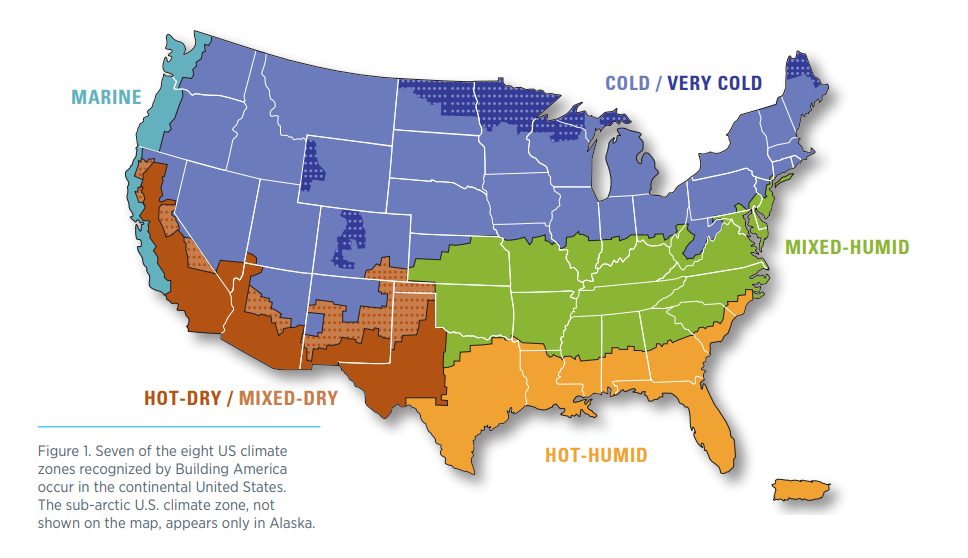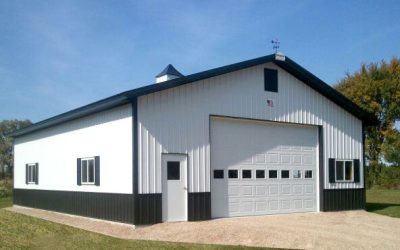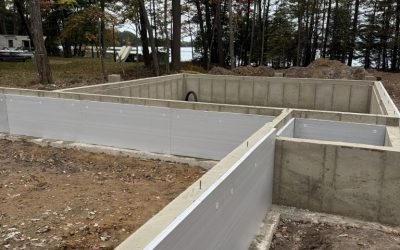Welcome back to our RVI Insulation Education blog series!
In the first blog of this series, we discussed the foundational concept of insulation and its critical importance in homes. We demonstrated how insulation slows heat transmission through a building’s floors, walls, and ceilings, minimizing energy loss, improving comfort, and reducing the size of heating and cooling equipment. We also explored the structural benefits of proper insulation, such as noise reduction, enhanced fire resistance, and prevention of mold growth due to controlled airflow and moisture management.
In the second blog of this educational series, we provided a comprehensive overview of the “Science of Insulation” and why it’s crucial in a home. We showed each key element – thermal envelope, pressure boundary, moisture, and heat transfer – and how they work together. Each factor is vital in making a house energy-efficient, comfortable, and safe.
Today, we will hone in on the specific insulation considerations when building a house in Northern Wisconsin. We’ll cover the unique climate considerations, the importance of avoiding too much spray foam usage in this area, and how building science principles apply.
Let’s dig in!
Insulation Considerations for Northern Wisconsin Homes
Northern Wisconsin’s climate presents unique challenges that make insulation even more critical. The Office of Energy Efficiency and Renewable Energy puts us in “Climate Zone 7, ” defined as “Very Cold.” This severe climate underscores the need for effective insulation solutions.

Proper installation becomes a challenge with nearly half the year spent in cold temperatures. In such conditions, spray foam or wet spray cellulose cannot be effectively installed. This limitation requires strategic planning and specific insulation types that can handle low temperatures during installation.
Pitfalls of Spray Foam Insulation in Wisconsin
Spray foam has several drawbacks for our climate:
- The extreme temperature fluctuations in the Midwest can compromise its effectiveness if not installed under ideal conditions.
- It requires a perfect installation environment (a dry, warm substrate), or it can lead to improper adhesion and gaps, fostering moisture issues.
- Achieving uniform thickness is essential but can be tricky, compromising its R-value.
- Spray foam contains isocyanates, derived from non-renewable crude oil products, which pose health risks if insulation is disturbed.
Given these concerns, areas like roof decks, walls, and floors are better off without spray foam. Alternatives like the BIBS system offer superior long-term performance, making them a wiser choice for energy-efficient and healthy homes.
Applying Building Science to Wisconsin Homes
Our approach to insulation is grounded in building science principles that maximize energy efficiency and home comfort. These principles can be summarized into four key areas:
- Thermal Envelope: The physical barrier that separates the interior living spaces from the external environment, which mitigates heat transfer. By properly insulating these areas, you create a shield that minimizes the loss or gain of heat, ensuring the home maintains a consistent temperature.
- Pressure Boundary: The “air barrier” is how we mitigate air leakage and manage moisture. Effective air sealing ensures the home maintains its integrity, preventing uncomfortable drafts and maintaining quality indoor air.
- Moisture: Excess moisture can lead to mold growth, which poses serious health risks, including respiratory problems and allergies. Addressing moisture correctly from the start can prevent these issues and contribute to a healthier living environment.
- Heat Transfer: Heat always seeks out cold, so during winter, heat will attempt to escape your home, and during summer, heat will strive to invade your cool living space. Insulation is a barrier to this transfer, reducing the rate at which heat moves in or out of your home.
Using a whole-home building science approach, RVI ensures these principles are seamlessly integrated into every project, enhancing home comfort and energy efficiency.
We Are Your Northern Wisconsin Insulation Experts!
Proper insulation is critical to creating an energy-efficient, comfortable home in Northern Wisconsin. With RVI’s expertise in building science and modern insulating technologies, homeowners can navigate the unique challenges of the region’s climate.
If you’re building a new home or are a building contractor working in this area, contact R-Value Insulators today. Let us help you create a better, more comfortable living environment!



